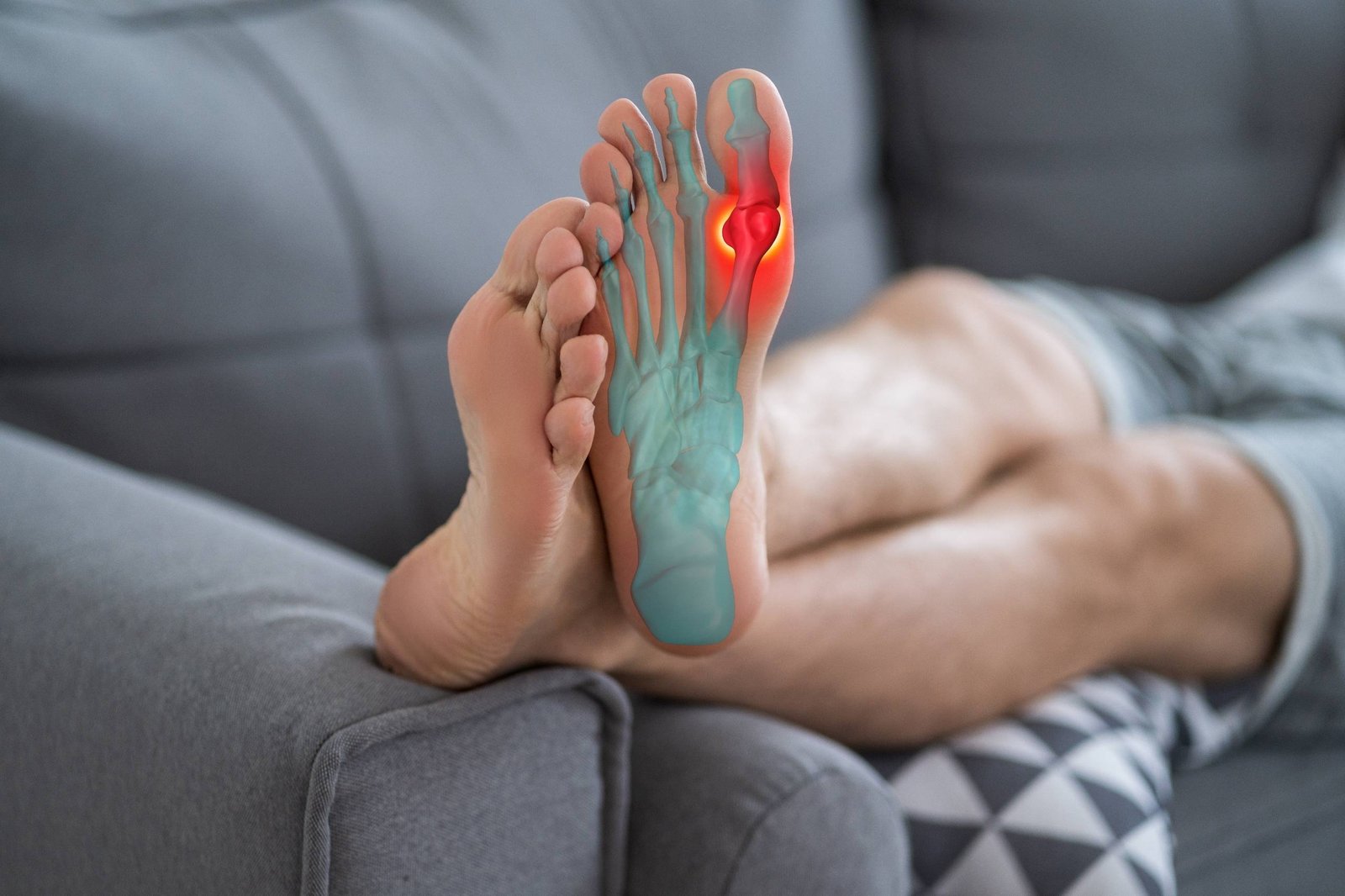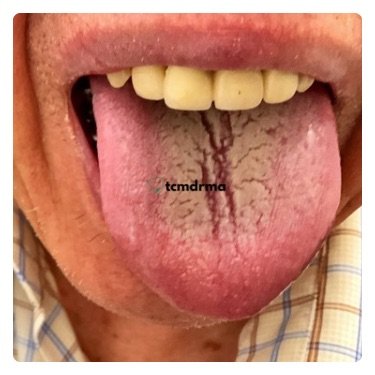
Brief Description
Gout is a form of arthritis characterized by sudden, severe pain, swelling, and redness in the joints, most commonly affecting the big toe. It occurs when high levels of uric acid in the blood form sharp crystals in the joints, leading to intense discomfort. Gout attacks can be triggered by factors such as a diet high in purines (found in red meat, shellfish, and alcohol), dehydration, or excessive stress.
Traditional Chinese Medicine (TCM) views gout as a result of internal imbalances, such as dampness, heat, and stagnation of Qi and blood, which require both symptomatic relief and holistic treatment to restore balance and prevent future flare-ups.
Common Misconceptions
TCM Diagnosis
Typical Tongue

Typical Pulse
The pulse can be deep and slow, or taut, soggy when it is cold-damp. The pulse can be fast, floating, soggy when it is damp-heat.
TCM Pathogenesis
In Traditional Chinese Medicine (TCM), gout is often attributed to several internal imbalances. One major cause is damage to the Spleen and Stomach, leading to an accumulation of cold and dampness in the body. This weakens the digestive system, impairing its ability to process fluids and food, which in turn creates dampness. On the other hand, a diet rich in oily, spicy foods contributes to damp-heat accumulation, further aggravating the condition.
Other common TCM pathogenesis includes stagnation of Qi and blood, which obstructs the meridians and causes pain. In some cases, underlying deficiencies of the Kidney or Liver contribute to the body’s inability to properly regulate uric acid, leading to flare-ups. Therefore, gout requires a multi-faceted treatment approach that addresses these internal imbalances.
TCM Treatment
General Principle
In Traditional Chinese Medicine (TCM), gout is generally categorized as "Bi Syndrome" or "Li Jie" (joint disorder). Treatment varies according to individual patterns, commonly classified as cold, heat, or a combination of both. Pathological factors such as dampness, phlegm, fluid retention, and blood stasis are also considered. In terms of the Six Channel Syndrome Differentiation, it primarily involves Shaoyang, Yangming, and Taiyin patterns.
Given the complexity of these classifications, relying solely on a single medication is unlikely to address the root cause. Effective treatment requires a holistic approach that targets both the underlying imbalance and the specific symptoms, which is the strength of TCM’s personalized treatment plans.
Unique Therapies We Apply
Treatment Plan
Precaution
Summary
Gout is a complex condition that requires a comprehensive treatment approach in Traditional Chinese Medicine (TCM). Beyond focusing on reducing uric acid levels, TCM addresses the root cause of gout, such as Qi stagnation, dampness, and blood stasis.
Treatment plans are tailored to individual needs, with a combination of classical formulas, acupuncture, and dietary changes. In the acute phase, pain relief is achieved through acupuncture and medication, while long-term recovery requires continued treatment to eliminate the underlying imbalances. A common challenge is the recurrence of gout due to dietary habits and premature discontinuation of treatment. Patients need to stay committed to both lifestyle changes and completing their treatment to prevent future flare-ups.

The Traditional Chinese Medicine treatment approaches outlined above are derived from my clinical experience, and I acknowledge there may be areas not fully covered or that require further refinement over time.
This content is intended to provide a learning reference for professionals and enthusiasts in Traditional Chinese Medicine and to help patients gain a better understanding of their conditions and common misconceptions.
However, I must emphasize that this information does not constitute specific treatment guidance. All TCM treatments must be tailored to the individual through thorough diagnosis by a qualified practitioner. Non-professionals should not attempt self-treatment based on this information, as any treatment conducted without professional supervision may carry potential safety risks.
